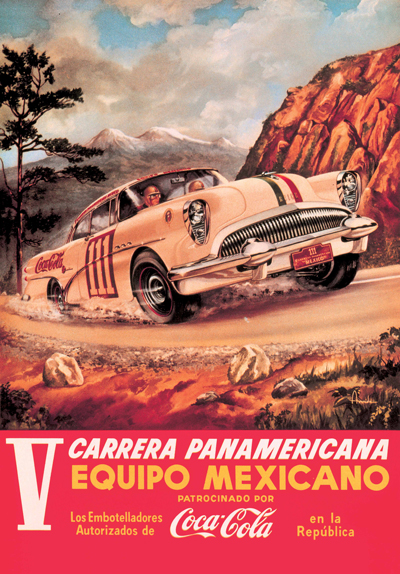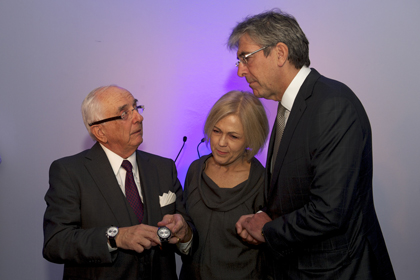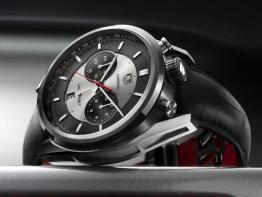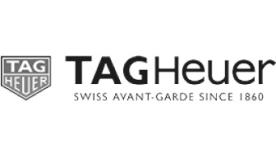Jack Heuer is retiring. Again. If everything had gone according to plan – the last but one plan, that is – he'd be putting his feet up by now, indulging in his passion for skiing for as long as his body allowed, and looking back on a life in watchmaking that began in the 1950s.
But that was last year's plan. During the world tour he undertook to mark his 80th birthday, Heuer said openly that 2012 would be his last year of service to the company founded by his great-grandfather in 1860.
And then someone pointed out that this year is the 50th anniversary of the Heuer Carrera – one of the great watches of the 20th century and an icon dreamed up by Jack Heuer himself – and convinced him to stay on for another year. Just one more year.
‘November 18 is my last day,' he says with a smile that acknowledges the irony but suggests this time he really means it. ‘On the 19th, I'll be 81. I do get tired and I enjoy taking it easy.'

Heuer is in London as part of a series of events celebrating 50 years of the Carrera (‘my last time here'). His duties include presenting Motor Sport Hall of Fame inductee and former Ferrari driver Niki Lauda with an award, dining among ‘friends' in the Tate Modern's private dining room, and talking to a few journalists – lucky people like me.
At each occasion he has a surprising amount of energy for a man of his age. Tracking him at these events over two days, I'm inspired by his vigour and enthusiasm for talking about his product – but then Heuer always was a passionate and pioneering marketeer with a savvy that bordered on genius.
A family fight and a brilliant idea
His watchmaking story begins in 1959. A qualified electrical engineer with a masters in production and management, he'd been offered a job with a young consultancy firm in the US city of Boston. But his father, keen to make sure his adventurous son had at least tasted life in the watch industry, persuaded him to delay taking up the position for a year to work for the family company.
Aware of his son's appetite to go to the States (Heuer was also trilingual), Heuer's father sent him to New York to open up a US subsidiary. The first few years were tough and the company failed to turn a profit. Then in 1962, two things happened that changed everything.
‘We had a family fight in 1962,' says Heuer. ‘My uncle had no successors and he no longer wanted to invest in the American sub. He wanted to sell the company, and I said if he sold the company I would leave as I had this other job offer, but that if I stayed I would want the majority. So I flew back from New York (to Switzerland) and my father gave me some shares and I bought some shares from my uncle. A week later and aged just 30, I returned to New York as majority stakeholder.'

That same year, Jack Heuer was at the 12 Hours of Sebring and got talking with Mexican driver Pedro Rodriguez, who told him about a brutal five-day road race called the Carrera Panamericana. The race had run for just five years between 1950-1954 and in that time had claimed 27 lives, earning itself a reputation as the most dangerous race in the world.
The name resonated with Heuer. ‘When I came back from Sebring I registered the name,' Heuer recalls. ‘We in the family would always give names to products, which was unusual in the watch industry. My father was very good at names – he created the Seafarer, TwinTime, Autavia, Ringmaster and so on. So I continued in the tradition and registered Carrera Heuer purely for watch applications.' Porsche, which won the last Carrera Panamericana, registered it for car applications, he reminds me.
Making good use of tension
Next came the design. ‘In those days, chronographs had overcrowded dials with tachymetres and old-fashioned looks, and I took away all that rubbish,' he says. ‘I was helped by a guy who invented the tension ring. Crystals were plastic back then, and they became porous and would leak after a certain time. The ring pushed the plastic against the case and improved water-tightness.
‘The ring was empty, so I said that's a beautiful occasion, we can use that ring and put something on there – so I put the fifth divisions. We were the first company to use the ring not just as a tension ring, but as a division ring, which allowed the dial to be very clean. That was the innovative part for me. It caught on and everybody copied it.'

Jack Heuer discusses this year's TAG Heuer Carrera Calibre 1887 Jack Heuer Limited Edition with guests at a private anniversary dinner at London's Tate Modern © TAG Heuer
The watch was a success and gave Heuer a much needed in with retail jewellers in the US (previously, it's business had been reliant on selling stop-watches to engineering companies – to the tune of 300,000 to 400,000 pieces a year). But what really catapulted the brand to its lofty status, and ensured the longevity of watches like the Carrera, was the tie to motor racing and to Ferrari during one of its most successful periods, the 1970s.
‘We were the first non-automotive sponsor who had a logo on a race car,' says Heuer. ‘Before it was only tyres and spark plugs and so on, and suddenly Ferrari had a big Heuer logo on the front. And then millions of toy cars had a Heuer logo. We would print thousands of stickers so people could put them on their cars to show they were part of it. As a marketing coup that was unique and I'm proud of that because nobody in the watch industry had done it before.'
Heuer became the motor sport watch brand, and pieces like the Carrera, Autavia and Monaco became the watches of choice for racing drivers – potent associations with tangible sales benefits.

The new TAG Heuer Carrera Calibre 1887 Jack Heuer Limited Edition, which Jack Heuer helped design © TAG Heuer
50 years on – and still popular
Despite all this, Jack Heuer laughs when asked if he ever imagined the Carrera would still be here, 50 years on. ‘Never, ever!' he exclaims, leaning back in his chair. Is the Carrera therefore his finest achievement? ‘Well – I don't think so,' he says after a short pause, folding his arms, one of which carries last year's Jack Heuer 80th birthday Carrera, the other this year's 50th anniversary piece, which he helped design. ‘I don't look at it that way, no. I don't deny that I'm very proud that a product I created 50 years ago is still popular, but the highlight of my career was being innovative in marketing.'
These landmarks, as well as the chronicled lows of being ‘cheated' of his own company will be discussed in much greater detail in his forthcoming biography, which is due out in the autumn. It'll be a gripping read, and, if everything goes according to plan, the last we hear from Jack Heuer as he heads into official retirement. Well, probably. There's always next year.





